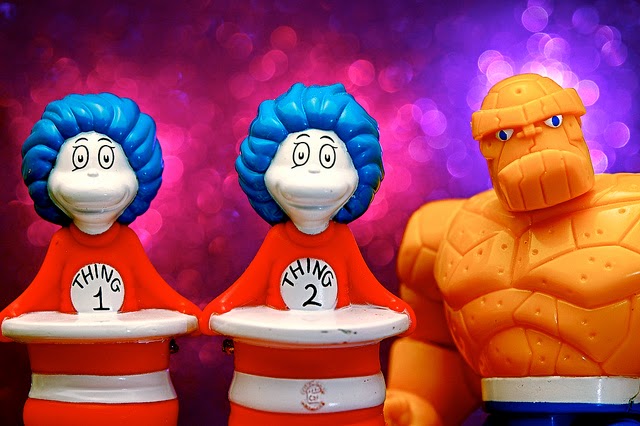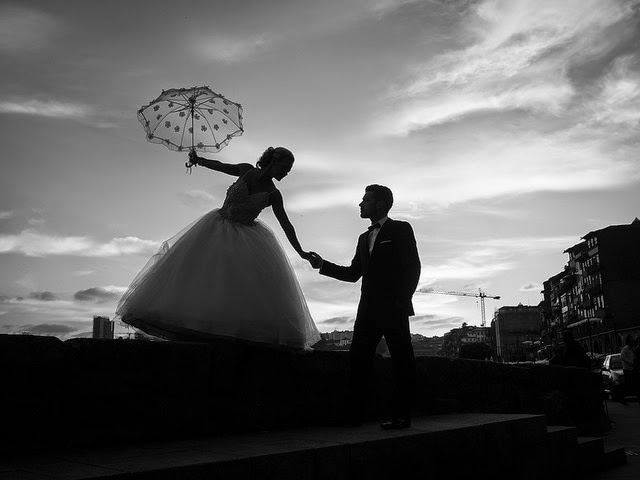Yesterday I began a discussion of Tags and Traits and talked about how they can help bring a character to life. Today I’d like to extend that discussion by talking about ...
2. How tags and traits can help us fit a character to their role in a story.
In this section we’re going to talk about the various roles a character can play, so let’s confront the elephant in the room: stereotypes.
Stereotypes are boring, but certain kinds of stereotypes—tropes—have gotten a bad rap. (If you think this is an outrageous view, please hear me out.)
Stereotypes vs Tropes
The way I’m using the word here, a trope is “a significant or recurrent theme; a motif.”
A stereotype, on the other hand, is “a widely held but fixed and oversimplified image or idea of a particular type of person or thing.”
For example, what’s the detective stereotype? When I say ‘detective’ what comes to mind?
Is the image of a man or woman? What are they wearing? How old are they? Are they a professional detective or do they moonlight? Do they have a Watson? On Saturday night, are they more likely to frequent a lady’s tea circle or a run-down bar? Do they have an arch-enemy?
My guess is that each of you has a radically different image of a detective. Why? Because there really isn’t any one stereotype of a detective, there are many, one for each sub-genre of detective story.
For instance, if you thought of a man who is a private detective, one who has a helper/sidekick and an arch-enemy then according to tvtropes.org (a truly wonderful site) you’re thinking about the trope of the Great Detective (e.g., Sherlock Holmes).
Or perhaps you thought of the Defective Detective (e.g., Monk) or of a Detective Drama (e.g., Death in Paradise).
Or perhaps, like me, you thought of a fluffy old lady who knits and seems scattered but has a brain like a scythe (the Little Old Lady Investigates trope). But, then, you could be more the Hardboiled Detective type.
My point in mentioning all these tropes is to show that ‘the stereotypical detective’ doesn’t exist. We—I—talk about ‘the mystery genre’ but there’s really no such thing, not if what we mean by that is something concrete enough to actually produce a trope. No, there are a plethora of tropes, each unique to its sub-genre—or so I would argue.
We’re almost ready to explore the question of whether tropes can be a writer’s friend. But, first, let’s look at ...
The role of the trope
Let me approach this by example. Let’s say we want to write a tea cozy mystery, or “cozy” for short. (This is from the Little Old Lady Investigates trope.)
- The sleuth is usually female.
- The sleuth is older, usually in the second half of her life.
- The sleuth doesn’t get paid for solving the murder. Perhaps she is retired or perhaps, like Jessica Fletcher (Murder, She Wrote), she writes murder mysteries and sleuths on the side.
- The sleuth is a Cool Old Lady. She is clever; witty. She stands up for what she thinks is right. She is practically always polite and takes the high road. (Most people completely discount the ability of the Little Old Lady to solve a crime because, well, she’s a little old lady!)
Okay, that about does it. Those traits won’t hold true for every case but—since this is the trope—they should capture the more important qualities of most of the sleuths in this sub-genre.
The big question: Should you cast to type or against type?
If you write a cozy would you cast to type and embrace the trope or would you cast against type and create something new, fresh, surprising?
If I wanted to cast against type then perhaps I’d create a young male police officer, a rookie, who is a bit of a dweeb and couldn’t knit a scarf if his life depended on it.
This could work. My character would be fresh, new, unexpected. On the other hand, I would be throwing away one of the biggest assets a genre writer has: all those folks who love reading traditional cozy mysteries. Even worse, if a reader of traditional cozy mysteries were to pick up my book they’d likely be expecting a sleuth cast to type so, chances are, they’d be disappointed. Disappointed readers often give one star reviews and return books.
I’m not saying this is a reason not to write against type, but it’s something to keep in mind when making your decision.
My point here is simply that it’s the authors choice. Just as there’s nothing in the least wrong with writing against type (though there are consequences) there’s nothing wrong with embracing a trope. Doing so will give you a character cozy readers will immediately recognize and, hopefully, love. But you can’t use the type as-is, it needs a twist.
Tweaking A Trope
The danger with writing to type is, as you know, that your character will be exactly what the reader expects and so she’ll be bored silly. We need to tweak the trope so that our character stands out from the crowd.
For example we could keep practically everything the same but make our protagonist male rather than female. Or we could make the protagonist young rather than middle-aged. Or perhaps our granny has been uprooted from her life in the village and must brave the mean streets of the big city. Or instead of being sweet and kind she’s grumpy and selfish (the Agatha Raisin mysteries). Or perhaps the sleuth is a teenager visiting his grandmother. He solves the crimes but, because the police won’t listen to a kid, his gran takes the credit.
So, in short, if you choose to write to type (a) know the trope of the sub-genre you’ve chosen and (b) give it a twist. Above all, make sure your character is unique.
A Digression: Write What You Know
I think this is one reason folks say “Write what you know.” Even if you’ve never been a detective, even if you’ve never even met a detective, put parts of yourself—as well as folks you know well, folks you have strong feelings about for good or ill—into your character.
Writers are a bit like Dr. Frankenstein. We take bits from our souls, bits from the souls of others, stitch them together and hope to make our creatures’ hearts beat, to make them live and breathe. I think once you reach that level of intimacy and specificity you can’t help but create something unique.
Putting it all together: Tags, Traits and Tropes
It’s taken us a while to get here, but we’ve done it. Now we’re ready to start using Tags and Traits to hook our character up to the role they’ll play in the story.
Once again, let’s do this by example. Let’s say we’ve decided to write a cozy mystery and we’re going to write to type. Yesterday we discussed the importance of tags and traits in breathing life into a character, to make them memorable, to make them the kind of artificial person readers will empathize with, the kind they will either love or loathe.
As we’ll see in a later post, Dwight V. Swain holds that there are four kinds of tags:
i. Tags of appearance
ii. Tags of speech
iii. Tags of manner
iv. Tags of attitude
I’m only going to use tags of appearance in this article but I will go into each of these categories in some detail in a later post.
Let’s say that our sleuth has moved from a quaint English village into the hustle and bustle of London. She’s gotten to the stage where she needs a bit of help and her wealthy nephew invites her to stay with him in his spacious penthouse.
Given the trope for this sub-genre, what tags and traits might we give our character?
Tags of Appearance
What we want to do is choose characteristics which will make our little old lady sleuth memorable AND which will connect her to the trope.
Ball of yarn
Glinda Ellison, my sleuth, is going to crochet rather than knit but, like Miss Marple, a crochet hook and ball of yarn will be her near constant companions.
How this hooks into the trope: Crochet reinforces her ‘harmless old lady’ feel and balls of yarn can roll all sorts of interesting places—behind couches, doors, into private bathrooms and all manner of restricted areas—thus providing our sleuth with a credible excuse to snoop.
Something fluffy
She will always wear at least one thing she has crocheted and it will be something pastel colored and fluffy.
How this hooks into the trope: The puffy frilliness reinforces her ‘harmless old lady’ feel.
Butterfly necklace
I want something that ties my sleuth to her nephew (Richard Fox), and I want this something to indicate how well off he is. At first I thought of having Richard give Glinda an emerald broach. I did a search on “emerald broach” and ended up at Tiffany & Co. looking at this lovely butterfly pendant. Butterflies are critters of air, which I associate with intellect. Sharp wit, though, can be like a two-edged sword, injuring both the prey and the huntsman, bringing them both to ruin. Perfect!
The other day I wrote about how the tarot can be used to help develop characters, so let’s see if it can help us fill in Glinda’s character information. Keeping with the butterfly motif, I’m going to say that Glinda was born in an air sign. Gemini, ruled by Mercury (quick intelligence), seems perfect.
Richard is wealthy, so he’s going to be an earth sign, Virgo. I chose Virgo because I want him to be bright like his favorite aunt (Virgo, too, is ruled by Mercury) but I need to give him a weakness. The fall of Virgo is Venus, which is perfect! He’s going to be too smart for his own good and unlucky in love.
I’m going to stop there. Hopefully that gives you an idea how a character’s tags and traits can tie them to their story role and, in so doing, both make them unique and give them a simulacrum of life.
My apologies for the long post. I’ll continue this discussion on Monday when we chat about how tags and traits can help us build a character’s arc. Stay tuned!











